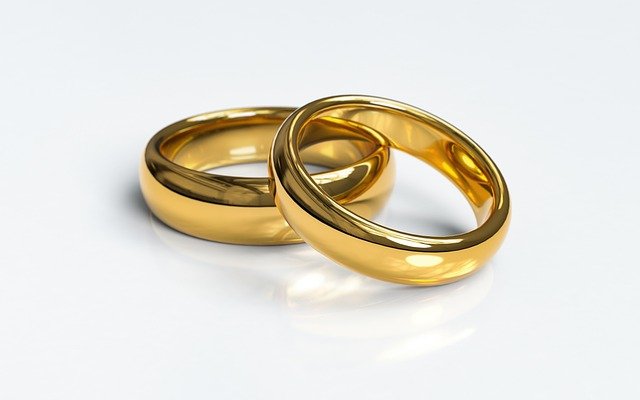Types Of Wedding Rings Explained
Wedding rings come in many forms, from plain bands to detailed designs with stones or patterns. Each type has its own look and meaning, giving couples choices that fit their style and traditions. In this article, you will learn about the main types of wedding rings, including classic gold, modern platinum, and rings with diamonds or other details. The guide also explains how these rings are used in different settings and why they are an important part of marriage traditions across the world.

Wedding rings have evolved significantly over centuries, transforming from simple metal bands into diverse expressions of personal style and commitment. Today’s couples face an exciting array of choices when selecting their wedding rings, from traditional precious metals to contemporary alternatives. Understanding the characteristics, benefits, and considerations of each type empowers you to make an informed decision that aligns with your preferences, daily activities, and long-term satisfaction.
What Are the Main Metal Options for Wedding Rings?
The metal you choose for your wedding rings forms the foundation of their appearance, durability, and maintenance requirements. Gold wedding rings remain the most popular choice globally, available in yellow, white, and rose variations. Yellow gold offers timeless elegance and comes in different purities, typically 9ct, 14ct, or 18ct, with higher carats containing more pure gold. White gold provides a contemporary silvery appearance achieved through alloying gold with white metals and often finished with rhodium plating. Rose gold has gained popularity for its romantic, warm hue created by mixing gold with copper.
Platinum wedding rings represent the premium tier of wedding ring metals, prized for their natural white lustre, exceptional durability, and hypoallergenic properties. Platinum is significantly denser and heavier than gold, offering superior resistance to wear and tarnishing. While more expensive, platinum maintains its appearance with minimal maintenance and rarely requires replating. Alternative metals like titanium, tungsten carbide, and palladium have entered the market, appealing to those seeking modern aesthetics, extreme durability, or budget-friendly options without compromising quality.
How Do Diamond Wedding Rings Differ from Plain Bands?
Diamond wedding rings introduce sparkle and visual interest to the traditional band design. These rings feature diamonds set in various configurations, from delicate channel settings to elaborate pavé designs. Full eternity rings showcase diamonds encircling the entire band, symbolizing endless love, while half eternity rings feature stones across the visible top portion, offering comfort and practicality. Three-stone designs represent the past, present, and future of a relationship, creating meaningful symbolism alongside aesthetic appeal.
The choice between diamond-adorned and plain wedding rings often reflects personal style preferences and lifestyle considerations. Plain bands offer timeless simplicity, easier maintenance, and lower risk of damage during physical activities. Diamond wedding rings require more careful wear and periodic professional cleaning to maintain their brilliance. Many couples opt for matching sets where one partner wears a diamond ring while the other chooses a complementary plain band, creating visual harmony while respecting individual preferences.
What Styles and Designs Are Available?
Wedding ring styles range from classic to contemporary, accommodating diverse aesthetic preferences. Traditional court-shaped bands feature rounded edges that sit comfortably against the finger, offering timeless appeal suitable for any hand type. Flat profile rings present a modern, architectural appearance with sharp edges and contemporary lines. D-shaped bands combine the comfort of court rings with a flatter exterior surface, providing a balanced compromise between traditional and modern aesthetics.
Textured and patterned wedding rings add personality through engraving, hammering, brushing, or milgrain detailing. Celtic knots, floral patterns, and geometric designs transform simple bands into unique artistic expressions. Two-tone rings combine different metal colours, creating visual contrast and contemporary appeal. Vintage-inspired designs incorporate filigree work, intricate engravings, and antique finishing techniques, appealing to those who appreciate historical craftsmanship and romantic aesthetics.
How Do Width and Thickness Affect Wedding Ring Selection?
The physical dimensions of wedding rings significantly impact comfort, appearance, and durability. Ring width typically ranges from 2mm for delicate feminine styles to 8mm or more for substantial masculine designs. Narrower bands suit smaller hands and those preferring understated elegance, while wider bands make bold statements and accommodate more elaborate designs or engravings. Comfort fit interiors, featuring a slightly domed inner surface, enhance wearability for wider bands by reducing contact area and allowing easier removal.
Thickness determines durability and weight, with thinner rings feeling lighter but potentially more susceptible to bending or damage. Thicker bands withstand daily wear more effectively, particularly important for those with active lifestyles or manual occupations. The relationship between width and thickness affects overall proportions, with wider rings typically requiring greater thickness to maintain structural integrity and prevent warping over time.
What Factors Should Guide Your Wedding Ring Choice?
Selecting wedding rings involves balancing aesthetic preferences with practical considerations. Lifestyle plays a crucial role, as certain metals and designs better suit active individuals, healthcare workers, or those frequently exposed to chemicals or rough conditions. Skin sensitivity may necessitate hypoallergenic options like platinum or high-carat gold. Budget constraints influence metal choice, design complexity, and diamond quality, with prices varying significantly across different options.
Long-term wearability deserves careful consideration, as wedding rings are typically worn continuously for decades. Classic designs often age more gracefully than trendy styles, though personal expression remains paramount. Matching or complementary sets create visual harmony for couples, though perfectly coordinated rings are not mandatory. Trying various styles, widths, and metals before purchasing helps ensure comfort and satisfaction with your final choice.
Conclusion
The diversity of wedding ring types ensures every couple can find rings that authentically represent their relationship and individual styles. Whether you prefer the traditional warmth of gold wedding rings, the luxurious durability of platinum wedding rings, or the sparkle of diamond wedding rings, understanding the characteristics of each type facilitates confident decision-making. By considering metal properties, design elements, lifestyle factors, and personal aesthetics, you can select wedding rings that will be cherished symbols of your commitment for years to come. Take time to explore options, try different styles, and choose rings that resonate with your unique love story.




